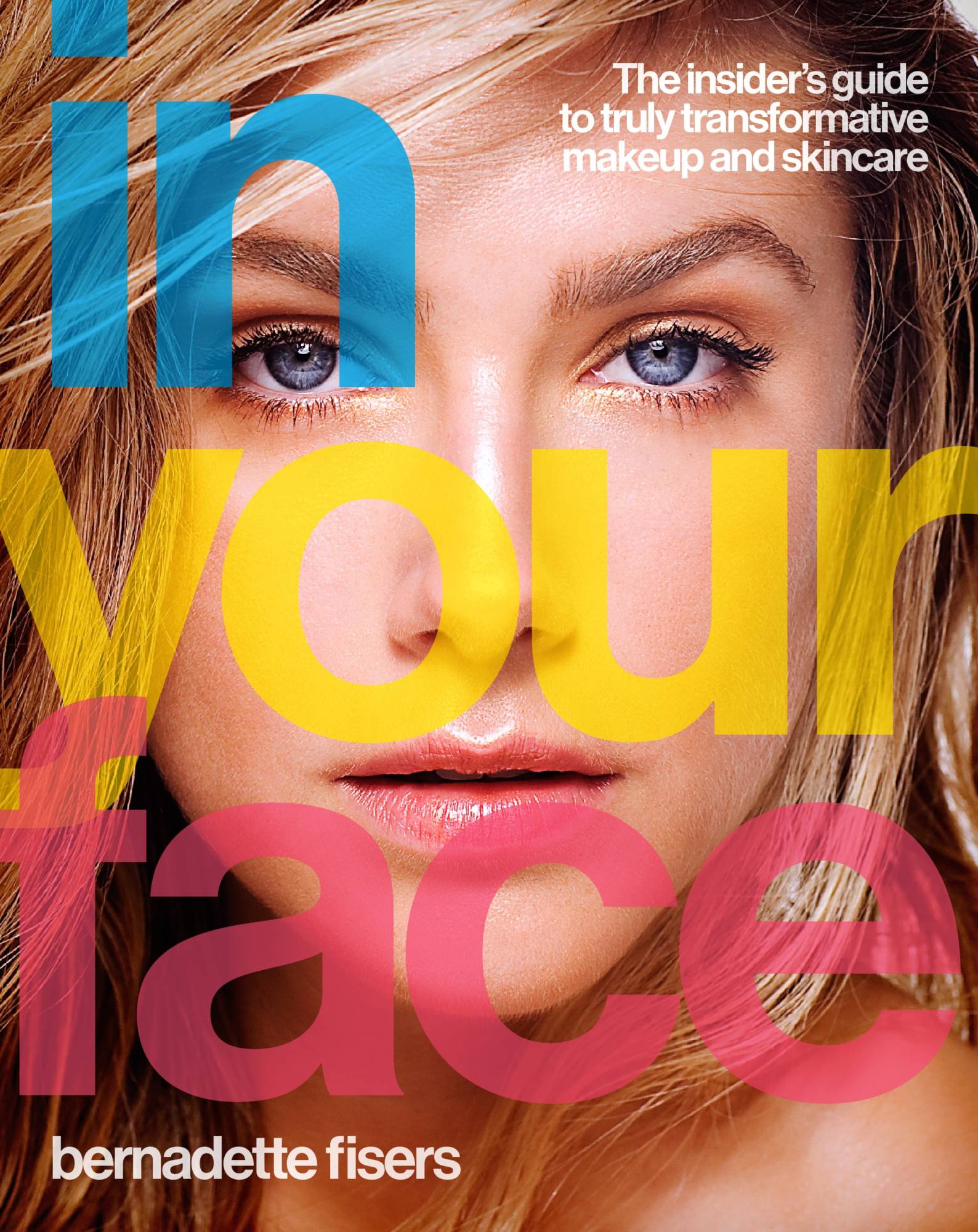Interview of Bernadette Fisers by Haylee Penfold // Part of the reason for writing this book was that I wanted younger woman in particular to be completely aware of what they are buying when it comes to beauty.
Interview of Bernadette Fisers by Haylee Penfold
Being in the beauty industry since you started hairdressing at fourteen, what made you want to write this book?
After working behind the scenes on advertising and editorials for fashion and beauty brands for decades I wanted to spill the beans about what actually goes on in the marketing and making of beauty products. It’s an insider’s look at the reality of the beauty business, which is a billion dollar one.
Part of the reason for writing this book was that I wanted younger woman in particular to be completely aware of what they are buying when it comes to beauty. I wanted them to be smarter and more discerning than my generation, and save their hard earned dollars for the stuff that really matters – like travel – this is the stuff of memories – not an expensive cream that makes a million promises but does very little.
It’s hard when you’ve got a massive beauty industry that thrives on telling us what we are lacking in our lives, and plays off our often shaky self-esteem to sell us skincare in particular, that often does very little to improve our skin. They spin a story to encourage you to believe – it’s all about the marketing and the packaging. And I believe we are smarter than that – we just need a bit of knowledge.
What it is really all about are the ingredients, and often you can find the same ingredients in the premium brands that you would find in the more affordable ones. There are so many budget friendly (drugstore) products out there that are excellent and are sometimes more effective than the expensive ones. You just need to know where in the world to look! Plus – I’ve done the hard work for you recommending great products from all around the world.
How do you think skincare and make up marketing has changed the past ten years?
I think we want and are starting to demand more authenticity and transparency. It’s not enough to make false promises anymore. We can all read the tiny disclaimers down the bottom of ads that often negate what the ad was about in the first place.
We realise that spokespeople and influencers are paid big dollars and that they are doing it for the money – not the love. It’s also more and more common to have botox filled actresses promoting a product – its become about celebrity not authenticity and we know that. We’ve been buying the dream in the past but now we are beginning to demand results. Real results – not promises.
In the first chapter of your book you addressed the unrealistic beauty expectations in product advertisements, what kind of effect do you think that has on the audience?
I think unrealistic beauty expectations has an extremely detrimental effect on young woman in particular. We compare ourselves to those highly retouched images and end up feeling bad about ourselves. We can never look like that because it’s impossible and unattainable.
No-one has their own makeup artist at home who spends 2 hours on them and then gets beautifully lit with tailored lighting then retouched within an inch of their lives…it’s just not real and we know that.
It’s commonplace to see an antiaging cream, with the model’s wrinkles retouched out. It’s not the cream doing the work it’s the re-toucher. There is a movement in the USA to ban the word antiageing on beauty products because often people don’t realise that to be able to claim anti ageing on packaging you only need to put an SPF in the product. It’s not the wrinkle eraser we would have hoped for.
It can be easy to get lost in the overwhelming world of skin care, and to fall in to the trap of the more you pay the better your results in this necessarily true?
I don’t think that the amount of money that you pay has anything to do with the results that you get. It’s all got to do with proven results and clinical trials. This is where cosmetic chemists and medical professionals test ingredients to see how effective they are.
For example, you can buy a 1600 moisturiser that contains diamond dust. Now diamond dust has not been clinically proven to do anything to your skin – but it’s a handy marketing ingredient. Sounds glamorous and sparkly. But does it work? – I’d argue that no, it does nothing – zip. Many of the super smart cosmetic chemists that I spoke to in New York while researching this book were not buying expensive and were not brand loyal, they just used what worked.
Cosmetics – of which skincare is a part of, are meant to sit on the top layer of your skin. Our skin is really great at keeping stuff out – and anything that can get “in” is marketed as a medicine. If you keep that one non-negotiable fact in mind you should look at skincare in a totally new light.
There are certain actives that have been clinically proven to work – often in about 6-12 weeks but these are very common actives that are found in many different skincare ranges. Some say that Japan and Korea are years ahead in skincare innovations, and I’d have to almost agree. Often those K-beauty and J-beauty skincare brands are totally affordable because their customers are not brand loyal they just look for what works. Price is absolutely not an indicator of effectiveness.
What essentials of skin care do you think for every woman should have? And does it differ to a man’s essentials?
It’s a great marketing tool to divide up the population and say that one half of the planet needs totally different skincare products, but often the difference in these products are in the packaging and the fragrance. Men have become more and more interested in grooming and that has led onto a significant growth in men using moisturisers and cleansers. And lets admit it, it’s nice for our man to smell good and be clean – we like it!
The one non-negotiable item that we should all be slathering on regardless of sex is sunscreen. The sun causes 80% of the damage to our skins and in Australia the sun is a killer – literally. Sunscreen should be our best friend and most prized skincare product because it does the most work by a long-shot. You can’t repair damage but you can prevent it and that is why in Japan and Korea woman don’t leave the house without first applying sunscreen.
What many people don’t realise is that often a sunscreen contains many moisturizing properties. In other words ingredients that we find in moisturisers – so if you have to use just one product then this is it!
Do you think skin care is becoming less of a “feminine” sell point and that more men are incorporating it into their daily routine?
Without a doubt the mens skincare market is growing. The amount of ads and products available for men is on the rise. This is due to demand – younger males can sometimes have a skincare routine that is more involved than your own – LOL. Certainly, the tone of male skincare ads is different and the marketing is different but essentially they are often selling a nearly identical product.
Young men have been more exposed to marketing over their lifetime. It’s taken a while to get men to use skincare, cosmetic companies have had a few false starts over the years – but they absolutely want to grow this business because it’s all extra sales to them and at the moment it’s up and running. We will see more and more of this over the next few years.
Do make up primers actually do anything?
There are different types of primers on the market and they often do different things for your skin – but you’ve absolutely got to flick the primer over and look at the ingredients in order to get the right one for you.
There are hydrating primers that are often full of oils like jojoba seed oil and squalene. These are nice if you have a dry skin but truly a moisturizer will do the same job. It is absolutely not worth buying an expensive one. If you use one of these types of primers when you have oily skin already your makeup will probably disintegrate faster …aaahhh!
There are primers that are full of silicones to make your makeup last longer. You’ll often see ingredients like dimithicone or trimethicone in them. These create a fine film on your skin – a bit like an undercoat and should help with controlling oiliness, filling in larger pores and make for a smoother finish.
What many people don’t realise, is that your foundation often already contains a silicone – so possibly you are doubling up. When buying a primer you want a simple ingredient list because there is no point in buying a primer with tons of ineffective ingredients that are only put in at 1% or less.
A big selling point for skin care to young adults is to treat acne, do a lot of brands meet the expectation they sell?
This is a tricky one for me to answer because I purposely didn’t go into acne in my book because it is such a large topic… but essentially, I believe that there are only a few ingredients that work with acne and there is no point in complicated ingredient lists. Simple is best.
What do you hope changes in the make-up and skin care industry going forward?
I would like to see the labelling changed. I would like to know when there is nanotechnology within my creams and at the moment there is no requirement in Australia to do that. I would like to see Actives and percentages listed so that the average girl can understand what she is buying. I would also like to see claims regulated, so that when a cream claims to hydrate or antiage that there is actually substance and laws governing these claims – not just marketing jargon. I want more transparency – in fact I want total transparency!






